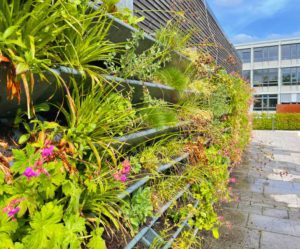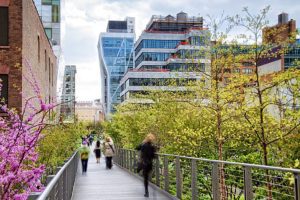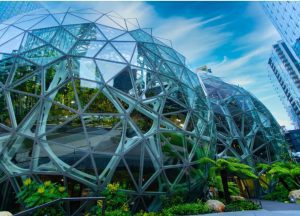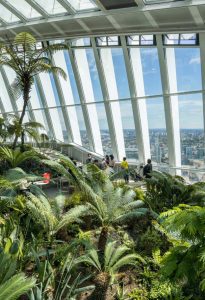As our planet grapples with the impacts of climate change, the need for innovative and adaptive solutions becomes increasingly apparent. In this blog post, we will explore climate-adaptable landscapes and how they are reshaping commercial spaces like offices, parks, and shopping centers to meet the challenges posed by changing seasons and unpredictable weather patterns.

The Need for Climate-Adaptable Landscapes:
Firstly, climate change is causing more extreme and unpredictable weather conditions, rendering traditional landscaping approaches inadequate. Conversely, climate-adaptable landscapes are designed to thrive in diverse weather scenarios. This adaptability is particularly crucial for commercial spaces, where a consistently inviting atmosphere is essential to accommodate the constant influx of people.

Modular Designs: A Dynamic Approach to Landscaping:
Secondly, at the forefront of climate-adaptable landscapes are modular designs, offering flexibility and scalability. These designs allow for easy modification and rearrangement of landscape elements, making it possible to adjust to seasonal variations. For instance, in office courtyards, modular seating arrangements can be reconfigured to maximize shade during scorching summer months or create cozy gathering spaces in the cooler seasons.

Dynamic Plant Choices: Climate-Sensitive Flora:
Thirdly, choosing the right plants is a critical element in creating climate-adaptable landscapes. By selecting climate-sensitive flora, landscapers can ensure that the greenery thrives in the specific conditions of each season. Deciduous trees, shedding leaves in winter, allow for increased sunlight and warmth during colder months, while evergreen shrubs provide year-round structure and visual interest.
Examples of Climate-Adaptable Landscapes:

a. The High Line, New York City: The High Line, an elevated park on Manhattan’s west side, exemplifies a climate-adaptable landscape. Featuring a mix of native and adaptive plants, the park showcases the beauty of changing foliage throughout the seasons. Its modular seating areas and flexible programming make it a dynamic space accommodating diverse activities, from summer picnics to winter strolls adorned with snow-covered greenery.

b. Amazon Spheres, Seattle: In Seattle, the Amazon Spheres employ a sophisticated climate control system that adapts to changing seasons. The interconnected glass domes house diverse plants from different climates, creating a self-sustaining ecosystem. The dynamic temperature and humidity controls inside the spheres ensure vegetation thrives year-round, providing Amazon employees with a unique and comfortable workspace.

c. The Shard’s Sky Garden, London: Located atop London’s iconic Shard, the Sky Garden is a climate-adaptable oasis in the city’s heart. Its glass-enclosed structure allows for natural light and ventilation while protecting visitors from the elements. The choice of plant species, including hardy succulents and temperature-tolerant palms, ensures that the Sky Garden remains lush and inviting regardless of the weather outside.
Benefits of Climate-Adaptable Landscapes:
a. Environmental Sustainability: Embracing climate-adaptable landscapes contributes to environmental sustainability. These designs prioritize water conservation, reduce energy consumption, and promote biodiversity, fostering healthier ecosystems within urban areas.
b. Increased User Engagement: Dynamic and seasonally responsive landscapes enhance user engagement by offering a variety of experiences throughout the year. Whether enjoying a summer concert in a park or sipping hot cocoa in a winter garden, climate-adaptable spaces cater to diverse preferences and activities.
c. Economic Viability: While initial investments in climate-adaptable landscapes may be higher, the long-term benefits outweigh the costs. Sustainable landscapes can reduce maintenance expenses, enhance property values, and attract more visitors, ultimately contributing to the economic viability of commercial spaces.
In conclusion, in the face of climate change, the evolution of landscaping is imperative for creating resilient and vibrant commercial spaces. By incorporating these innovative concepts, commercial spaces can thrive aesthetically and contribute to the well-being of the environment and the people who inhabit these dynamic and ever-changing landscapes.
